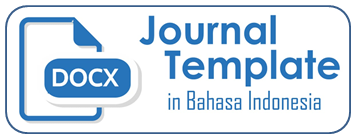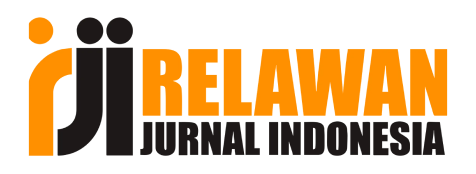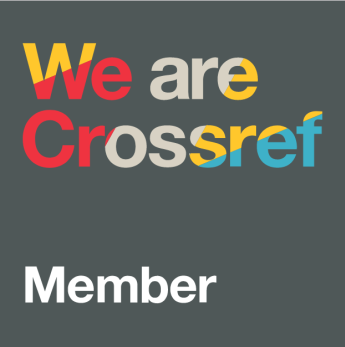An Overview of the Self-Concept of Out-of-Region Students on Guidance and Counseling Study Program
DOI:
https://doi.org/10.22460/quanta.v8i3.5150Keywords:
Self-concept, Out-of-Region Students;, Educational across regionalAbstract
English: The phenomenon of educational equity has facilitated educational mobility across regional boundaries, it makes many students choosing to study at educational institutions in other regions. However, this experience is often followed by unique psychological challenges. Self-concept plays a role in determining an individual's mental/psychological development. Self-concept is also a better predictor of future-oriented motivation for career aspirations in science. This study aims to explain the description of the self-concept of overseas students in the Guidance and Counseling Study Program at Yogyakarta State University. The research design used in this study is to use descriptive quantitative methods. The variable is self-concept. The subjects of this study were active students who were overseas students in the Guidance and Counseling Study Program of FIPP UNY. The data collection instrument used the Tennessee Self Concept Scale (TSCS) translated by Sri Rahayu Partosuwido, et al. The scale that has been translated are valid and reliable.
Indonesia: Fenomena pemerataan pendidikan telah memfasilitasi mobilitas pendidikan lintas batas daerah, yang menyebabkan semakin banyak mahasiswa memilih untuk belajar di institusi pendidikan di daerah lain. Namun, pengalaman ini seringkali diikuti oleh tantangan psikologis yang unik. Konsep diri memiliki peran penting dalam menentukan perkembangan mental/psikologis individu. Konsep diri juga merupakan prediktor yang lebih baik dari motivasi yang berorientasi masa depan untuk cita-cita karir dalam ilmu. Penelitian ini bertujuan untuk menjelaskan gambaran konsep diri mahasiswa perantauan di Prodi Bimbingan dan Konseling Universitas Negeri Yogyakarta. Rancangan penelitian yang digunakan penelitian ini adalah dengan menggunakan metode kuantitatif deskriptif. Variabel dalam penelitian ini adalah konsep diri. Subjek dari penelitian ini merupakan mahasiswa aktif yang merupakan mahasiswa perantauan di Prodi BK FIPP UNY. Instrumen pengumpulan data menggunakan skala Tennessee Self Concept Scale (TSCS) terjemahan Sri Rahayu Partosuwido, dkk. yang telah dilakukan oleh sri rahayu Partosuwindo, dkk, skala yang telah diterjemahkan semua butir item valid dan reliabel.
References
Abduh, M. (2019). Persepsi Konsep Diri Sendiri Dengan Kecenderungan Kenakalan Remaja di Kecamatan Cipayung Kota Depok. Sintesa: Jurnal Ilmu Pendidikan, 14(1).
Amin, N. F., Garancang, S., & Abunawas, K. (2023). Konsep umum populasi dan sampel dalam penelitian. Pilar, 14(1), 15-31.
Bette, D.E. 2013. Predictive Influence of Academic Self-Concept and Motivational Arousals in Examination Cheating Tendency among Studens in Cross River State-Nigeria. British Journal of Education, Society & Behavioral Science, 4(3):383-391
Burns, R.B. 1993. Konsep Diri (teori, Pengukuran, Perkembangan dan Perilaku). Terjemahan Eddy. Jakarta: Arcan
Calhoun, J.F. Acocella, J.R. 1995. Psikologi Tentang Penyesuaian dan Hubungan Kemanusiaan. Terjemahan Satmoko. Semarang: IKIP Semarang Press.
Damarhadi, S., Mujidin, M., & Prabawanti, C. (2020). Gambaran Konsep Diri Pada Siswa SMA Ditinjau Berdasarkan Jenis Kelamin. Psikostudia: Jurnal Psikologi, 9(3), 251-259.
Fitts, W. H. 1971. The Self Concept and Self Actualization. California : Western Psychological Service.
Jansen, M., Ronny Scherer & Ulrich Schoeders. 2015. Students’ Self-concept and Self-efficacy in The Sciences: Differential relations to antecedents and educational outcomes. Journal Contemporary Educational Psychology 41 (2015) 13-24.
Mz, I. (2018). Peran konsep diri terhadap kedisiplinan siswa. NALAR: Jurnal Peradaban dan Pemikiran Islam, 2(1), 1-11.
Nasution, L. M. (2017). Statistik deskriptif. Hikmah, 14(1), 49-55.
Notosoedirdjo, Moeljono dan Latipun. 2007. Kesehatan Mental Konsep dan Penerapan. Malang: UMM Press.
Retnanto, A. (2017). Konsep Diri Dan Pengaruhnya Terhadap Kenakalan Remaja Pada Siswa SMK Negeri I Rembang. KONSELING EDUKASI “Journal of Guidance and Counseling, 1(1).
Sari, W. J., Purwanto, E., & Japar, M. (2017). Konseling Naratif Untuk Meningkatkan Konsep Diri Siswa. Jurnal Bimbingan Konseling, 6(1), 44-48.
Sternke, Jamie C. 2010. Self-Concept and Self-Esteem in Adolescents with Learning Disabilities. American Psychological Association, 5th edition, Page 03.
Subroto, U., Wati, L., & Satiadarma, M. P. (2018). Hubungan Tipe Kepribadian Dengan Penyesuaian Diri Mahasiswa Perantau di Universitas Tarumanagara Jakarta. Provitae: Jurnal Psikologi Pendidikan, 11(2), 84 101.
Swarjana, I. K., & SKM, M. (2022). Populasi-sampel, teknik sampling & bias dalam penelitian. Penerbit Andi.
Utomo, P., Asvio, N., & Prayogi, F. (2024). Metode Penelitian Tindakan Kelas (PTK): Panduan Praktis untuk Guru dan Mahasiswa di Institusi Pendidikan. Pubmedia Jurnal Penelitian Tindakan Kelas Indonesia, 1(4), 19. https://doi.org/10.47134/ptk.v1i4.821
Wang, Jianjun. 2007. A Trend Study of Self-Concept and Mathematics Achievement in a Cross-Cultural Context. Mathematics Education Research Journal California State University (2007), Vol. 19, No. 3, 33–47.
Widiarti, Pratiwi Wahyu. (2017). Konsep Diri (Self Concept) Dan Komunikasi Interpersonal Dalam Pendampingan Pada Siswa Smp Se Kota Yogyakarta. Informasi Kajian Ilmu Komunikasi. 47(1).
Yahaya, A. 2009. The Relationship between Self-Concept and Communication Skills toward Academic Achievement among Sekondary School Students in Johor Bahru. International Jurnal of Psychological Studies. 1(2).
Yahaya, Azizi. 2009. The Relationship between Self-Concept and Communication Skills toward Academic Achievement among Sekondary School Students in Johor Bahru. International Jurnal of Psychological Studies Vol.1, No.2 December 2009.
Downloads
Published
How to Cite
Issue
Section
License
Copyright (c) 2024 amalia richasary, rizma kurniasari, dwiky janget permana

This work is licensed under a Creative Commons Attribution-ShareAlike 4.0 International License.
Quanta: Jurnal Kajian Bimbingan dan Konseling dalam Pendidikan is licensed under a Creative Commons Attribution-ShareAlike 4.0 International License. Authors who publish with the Quanta Journal agree to the following terms:
- Authors retain copyright and grant the journal right of first publication with the work simultaneously licensed under a Creative Commons Attribution License that allows others to share the work with an acknowledgment of the work's authorship and initial publication in this journal.
- Authors are able to enter into separate, additional contractual arrangements for the non-exclusive distribution of the journal's published version of the work (e.g., post it to an institutional repository or publish it in a book), with an acknowledgment of its initial publication in this journal.
- Authors are permitted and encouraged to post their work online (e.g., in institutional repositories or on their website) prior to and during the submission process, as it can lead to productive exchanges, as well as earlier and greater citation of published work.



























